Do you have a question about the MSI MAG B460M MORTAR and is the answer not in the manual?
Important guidelines for handling components and ensuring safe assembly and operation.
Information on supported CPUs, chipset, and memory specifications.
Details on PCIe slots and onboard graphics capabilities.
Specifications for storage interfaces and network/wireless connectivity.
Overview of internal connectors, audio, and back panel ports.
Details on LED features, I/O controller, hardware monitor, and form factor.
Information on included software, Dragon Center, and special hardware capabilities.
Diagram and description of the ports on the motherboard's rear panel.
Explanation of the status indicators for the LAN port.
Guide to connecting audio devices to the motherboard's audio jacks.
Instructions and important notes for installing the CPU into the socket.
Guide to installing memory modules into DIMM slots for optimal performance.
Details on PCIe expansion slots and SATA connectors for storage devices.
Procedure for installing M.2 SSDs, including heatsink preparation.
Diagrams and pinouts for connecting front panel switches and LEDs.
Details on connecting the ATX power supply to the motherboard.
Pinouts for front panel audio and USB 2.0 connectors.
Pinouts for USB 3.2 Gen 1 and Type-C front panel connectors.
Connectors for Thunderbolt add-on cards and Intel RTD3 functionality.
Guide to connecting fans and adjusting their modes (PWM/DC).
Connectors for chassis intrusion, TPM modules, and CMOS reset.
Connectors for RGB LED strips and fans, including voltage compatibility.
Information on onboard LEDs and their meaning for system status.
Step-by-step instructions for installing the Windows 10 operating system.
Procedures for installing essential system drivers and software utilities.
Introduction to UEFI BIOS, its benefits, and incompatible system configurations.
Guide to entering BIOS setup and using function keys for navigation.
Procedures for resetting BIOS to defaults and updating BIOS via M-FLASH.
Instructions for updating BIOS using the MSI Dragon Center software.
Overview of the EZ Mode BIOS interface and its primary functions.
Explanation of EZ Mode features like system info, M-Flash, and hardware monitor.
Instructions on adding and deleting BIOS items to the favorite menu.
Overview of the Advanced Mode BIOS interface and its main menu options.
Explanation of BIOS menu options like SETTINGS, OC, M-FLASH, and BOARD EXPLORER.
Introduction to the OC Menu for configuring frequencies and voltages for overclocking.
Detailed settings for CPU ratio, turbo ratios, and frequency adjustments.
Configuration options for memory frequency, timings, and voltage controls.
Detailed settings for DRAM timing, CPU voltages, and memory fast boot.
Statements regarding compliance with FCC and C-Tick regulations.
Guidelines for battery disposal and information on chemical substances.
Information on environmental policy and Waste Electrical and Electronic Equipment.
Restrictions on wireless radio use, especially in the 2.4GHz and 5GHz bands.
Information on radio frequency exposure levels and EMF compliance.
Important guidelines for handling components and ensuring safe assembly and operation.
Information on supported CPUs, chipset, and memory specifications.
Details on PCIe slots and onboard graphics capabilities.
Specifications for storage interfaces and network/wireless connectivity.
Overview of internal connectors, audio, and back panel ports.
Details on LED features, I/O controller, hardware monitor, and form factor.
Information on included software, Dragon Center, and special hardware capabilities.
Diagram and description of the ports on the motherboard's rear panel.
Explanation of the status indicators for the LAN port.
Guide to connecting audio devices to the motherboard's audio jacks.
Instructions and important notes for installing the CPU into the socket.
Guide to installing memory modules into DIMM slots for optimal performance.
Details on PCIe expansion slots and SATA connectors for storage devices.
Procedure for installing M.2 SSDs, including heatsink preparation.
Diagrams and pinouts for connecting front panel switches and LEDs.
Details on connecting the ATX power supply to the motherboard.
Pinouts for front panel audio and USB 2.0 connectors.
Pinouts for USB 3.2 Gen 1 and Type-C front panel connectors.
Connectors for Thunderbolt add-on cards and Intel RTD3 functionality.
Guide to connecting fans and adjusting their modes (PWM/DC).
Connectors for chassis intrusion, TPM modules, and CMOS reset.
Connectors for RGB LED strips and fans, including voltage compatibility.
Information on onboard LEDs and their meaning for system status.
Step-by-step instructions for installing the Windows 10 operating system.
Procedures for installing essential system drivers and software utilities.
Introduction to UEFI BIOS, its benefits, and incompatible system configurations.
Guide to entering BIOS setup and using function keys for navigation.
Procedures for resetting BIOS to defaults and updating BIOS via M-FLASH.
Instructions for updating BIOS using the MSI Dragon Center software.
Overview of the EZ Mode BIOS interface and its primary functions.
Explanation of EZ Mode features like system info, M-Flash, and hardware monitor.
Instructions on adding and deleting BIOS items to the favorite menu.
Overview of the Advanced Mode BIOS interface and its main menu options.
Explanation of BIOS menu options like SETTINGS, OC, M-FLASH, and BOARD EXPLORER.
Introduction to the OC Menu for configuring frequencies and voltages for overclocking.
Detailed settings for CPU ratio, turbo ratios, and frequency adjustments.
Configuration options for memory frequency, timings, and voltage controls.
Detailed settings for DRAM timing, CPU voltages, and memory fast boot.
Statements regarding compliance with FCC and C-Tick regulations.
Guidelines for battery disposal and information on chemical substances.
Information on environmental policy and Waste Electrical and Electronic Equipment.
Restrictions on wireless radio use, especially in the 2.4GHz and 5GHz bands.
Information on radio frequency exposure levels and EMF compliance.
| Processor socket | LGA 1200 (Socket H5) |
|---|---|
| Processor manufacturer | Intel |
| Compatible processor series | Intel Celeron, Intel Core i3, Intel Core i5, Intel Core i7, Intel Core i9, Intel Pentium |
| Maximum number of SMP processors | 1 |
| Cables included | SATA |
| Audio chip | Realtek ALC1200 |
| Component for | PC |
| Motherboard chipset | Intel B460 |
| PC health monitoring | CPU, FAN, Temperature |
| Audio output channels | 7.1 channels |
| Motherboard form factor | micro ATX |
| BIOS type | UEFI AMI |
| ACPI version | 6.2 |
| BIOS memory size | 128 Mbit |
| Clear CMOS jumper | Yes |
| System Management BIOS (SMBIOS) version | 3.2 |
| USB 2.0 ports quantity | 2 |
| USB 3.2 Gen 1 (3.1 Gen 1) Type-A ports quantity | 3 |
| USB 3.2 Gen 1 (3.1 Gen 1) Type-C ports quantity | 0 |
| Number of SATA III connectors | 6 |
| Wi-Fi | No |
| LAN controller | Realtek RTL8125B |
| Ethernet interface type | 2.5 Gigabit Ethernet |
| RAID levels | 0, 1, 5, 10 |
| Supported storage drive types | HDD & SSD |
| Supported storage drive interfaces | SATA III |
| Maximum resolution | 4096 x 2160 pixels |
| Memory channels | Dual-channel |
| Memory slots type | DIMM |
| Number of memory slots | 4 |
| Supported memory types | DDR4-SDRAM |
| Maximum internal memory | 128 GB |
| Supported memory clock speeds | 2666, 2933 MHz |
| Width | 243 mm |
|---|
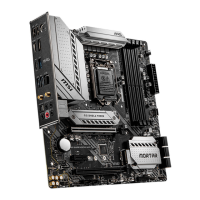

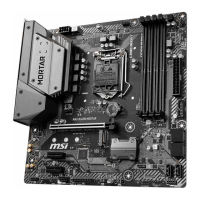
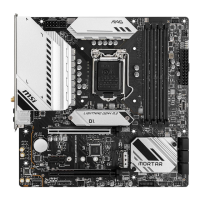

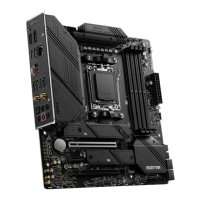
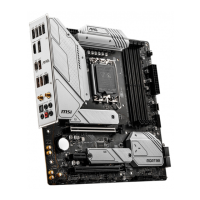
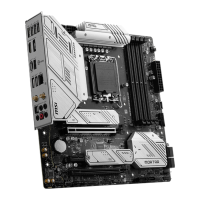
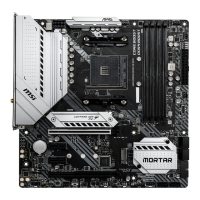
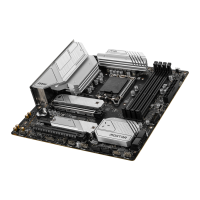
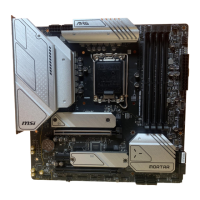

